For a comfortable atmosphere in the house, it is necessary to choose the right finishing materials. Effectively decorated walls allow you to make the interior original and unique. No other room is used as often as the kitchen. All coatings are subjected to destructive effects here. The walls are gradually covered with a coating of grease and chemical detergents. All these factors should be considered when decorating a room. Manufacturers offer a wide range of materials for kitchen decoration. The ideal wall covering should be moisture and wear resistant.

Types of interior decoration materials - wall design
The choice of material for interior decoration must be approached with all responsibility, carefully studying all the advantages and disadvantages. In modern interiors, practicality and durability are combined with the aesthetic appeal of finishes.
Attention! Earned on our website kitchen designer. You can familiarize yourself with it and design your dream kitchen for free! May also come in handy wardrobes designer.
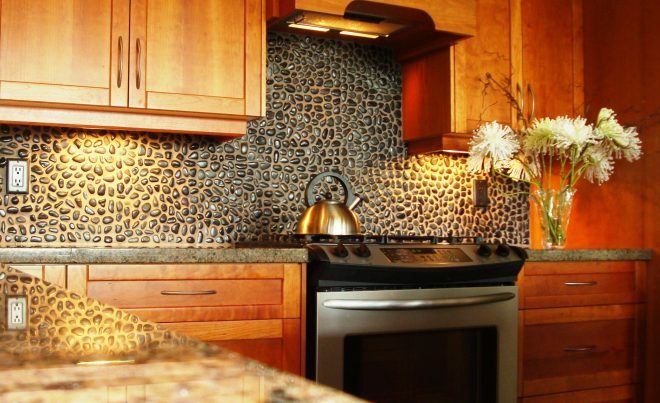
Tile as decor: how to decorate the ceiling and wall above the table
For its manufacture, ceramics, quartz-vinyl, expanded polystyrene, polyvinyl chloride are often used. The ideal option when renovating a kitchen is to decorate the walls with ceramic tiles. It is indispensable in those places that are exposed to the most severe pollution - next to the sink and stove.
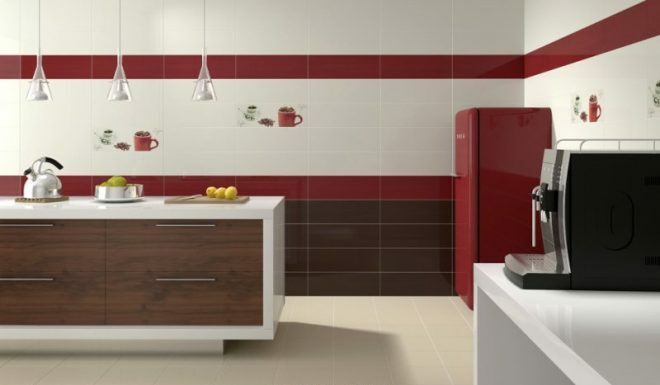
Resistance to moisture, aggressive substances, sudden changes in temperature contributes to its popularity among consumers. The varied texture and color palette of modern materials meets the most demanding tastes and allows you to create a stylish interior design.
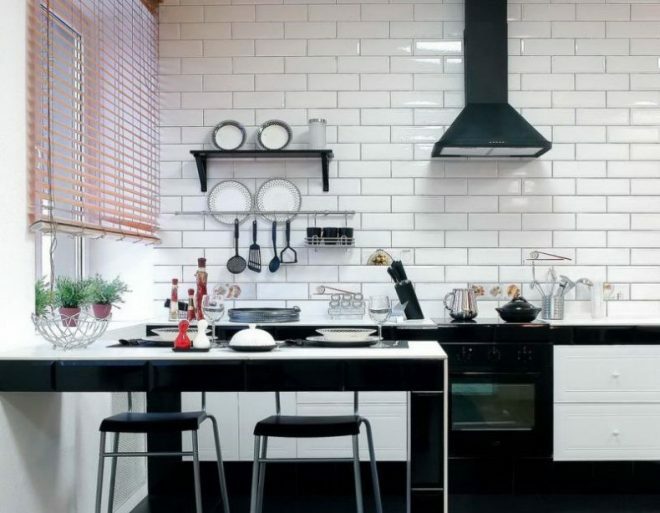
Tile wall cladding options:
- Imitation brickwork (more details).
- Imitation of metal.
- Ceramic panel.
- Photo tile.
- Imitation wood.
- Imitation stone.
- Mosaic.
- Patchwork.
- Floral prints.
The size of the tile is important, if it is large - this visually reduces the room. The small tile format visually expands the space of a small kitchen. Also see how to put it here correctly.
Wallpaper
For decoration and decoration of walls, they have been used for a long time, over time the wallpaper has changed, new samples have appeared. Wallpaper today is not only a covering with plain paper with a pattern, new materials are denser, more durable and have a beautiful design.
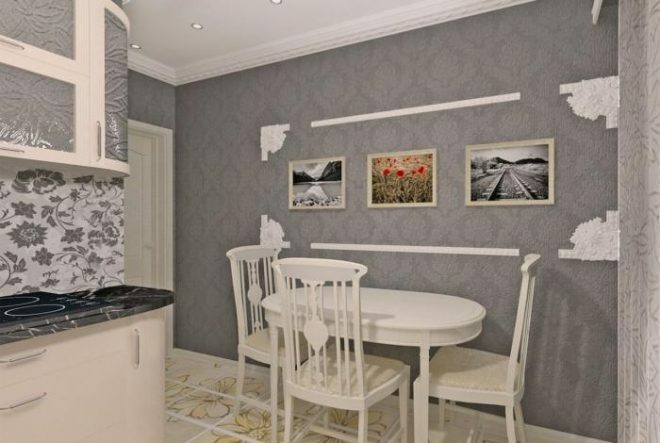
Types of wallpaper:
- Vinyl. They come with a paper or fabric (non-woven) backing. They produce wallpaper stylized as fabric, wood, brick, stone. Due to their high wear resistance, they can serve up to 10 years. Good moisture resistance allows dirt to be washed off and wiped off. The disadvantages include the fact that vinyl wallpaper does not allow air to pass through and has a high cost. It is not recommended to glue on damp walls. Low quality samples can release formaldehyde.
- Wallpaper. They are an affordable, practical, but at the same time effective material for decorating a room. Constant replenishment of the assortment with samples of new technologies (LED, 3D, fluorescent), having high image quality, a variety of patterns and textures, contributes to even greater popularity. In the kitchen, it is more advisable to choose wallpaper on a vinyl or non-woven base. Preference is given to materials with high moisture resistance. Stylized as leather, papyrus, canvas, sand, frost, they allow you to create a variety of decorative effects in the interior. Photo wallpaper is used to decorate the dining area. When decorating a kitchen apron, for greater moisture resistance, the wallpaper is covered with glass or varnish in several layers.
- Fiberglass. The most durable type of wallpaper, used mainly for painting. The advantages also include fire resistance, anti-static, resistance to fungus and parasites, non-combustibility. Consideration must be given to the difficulty of dismantling fiberglass.
- Natural. They are made of bamboo, wood chips, attached to the fabric base using nylon thread or special glue. Usually they are not painted to preserve their original natural appearance. Natural wallpaper easily absorbs odors and is not considered practical for decorating the kitchen, but the environmental properties of the material make it possible to use them for those who suffer from allergies.
To decorate the walls in the kitchen, it is not recommended to purchase paper and liquid wallpapers due to their poor moisture resistance. More details on how to choose wallpaper for the kitchen, wrote in here.
Painting in the working area
Painting is the most democratic option for wall decoration. The variety of materials allows you to create an individual interior for your own taste relatively cheaply.
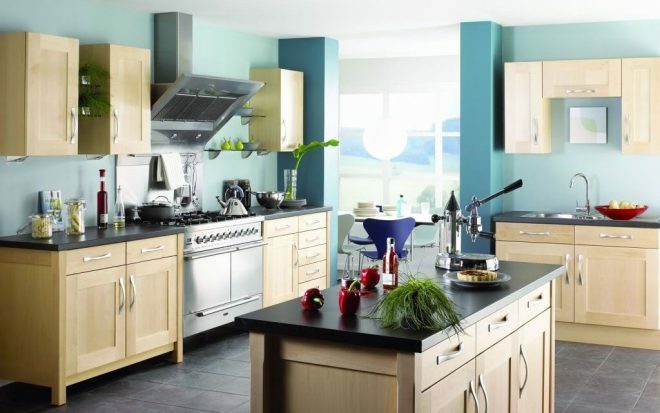
Advantages of painting walls:
- waterproofness;
- pollution resistance;
- durability;
- versatility;
- resistance to cleaning agents;
- a variety of colors and textures;
- ease of care;
- safety.
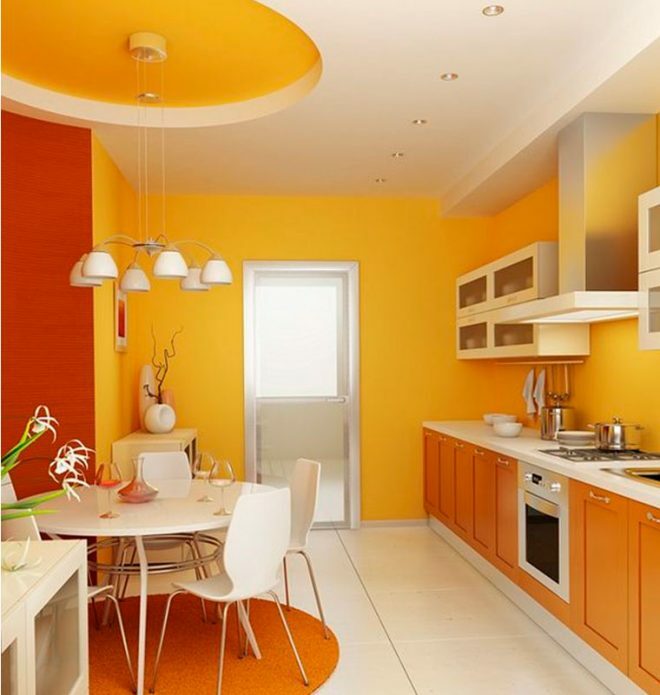
The following types of paints are used for kitchen walls:
- Acrylic. Suitable for any surface. It is deeply absorbed, which allows the use of acrylic paint for porous surfaces. Waterproof, flexible paint can hide minor blemishes. Resistant to damage, does not flake off. After drying, it darkens slightly.
- Water-based. Dries quickly, odorless and does not cause allergies. You can create any desired shade by adding a variety of pigments to it.
- Latex. The most expensive type of paint. Possesses increased wear resistance, water-repellent properties. Air permeable, vapor permeable. It can hide small cracks up to 1 mm.
- Silicone. It is elastic, vapor-proof, and has antifungal properties. The composition includes silicone resins, and water acts as a solvent, so the paint is odorless and environmentally friendly.
Decorative plaster
This is an ordinary plaster that is mixed with various dyes. Varieties of decorative plaster:
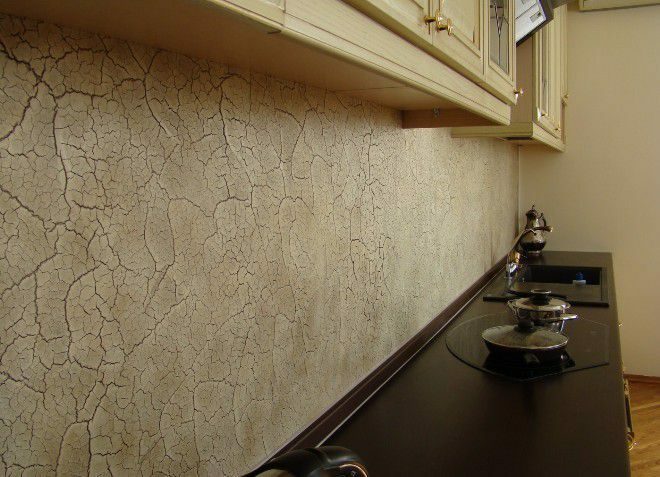
- Mineral. The most common type, based on mineral chips. Environmentally friendly and resistant to external influences material.
- Textured. A white mass that is applied to the walls as a background and subsequently covered with paint. Textured plaster can be supplemented with ornaments, bas-reliefs, or other decorative elements can be applied to it.
- Venetian. In its finished form, it resembles natural stone, it can be used to trim all walls or combine with other types. Venetian plaster effectively masks wall defects (dents, cracks), is applied to almost any surface. Resistant to moisture and mechanical damage, does not fade and does not absorb foreign odors. Of the minuses, it has a high cost, certain skills are required to apply it.
Can it be sheathed with wooden clapboard or parquet board?
Lining. Thin board for surface sheathing is a product of wood processing. Of all wooden materials, it is most often used for interior decoration. It has all the advantages of wood - durability and environmental friendliness. It has a low weight, is manufactured with ready-made grooves, which makes the installation process easier.
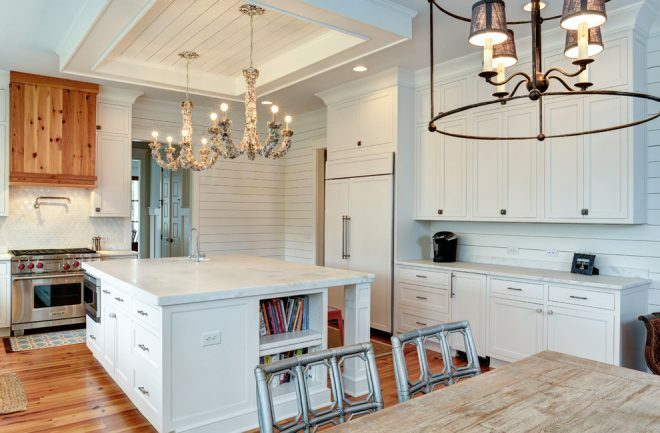
The decorative properties are low, but the lining, if desired, can be painted in any color or varnished. Lining is most often allocated to the dining area. If it is used for sheathing an apron, it is treated with an antiseptic and covered with moisture-resistant paint.
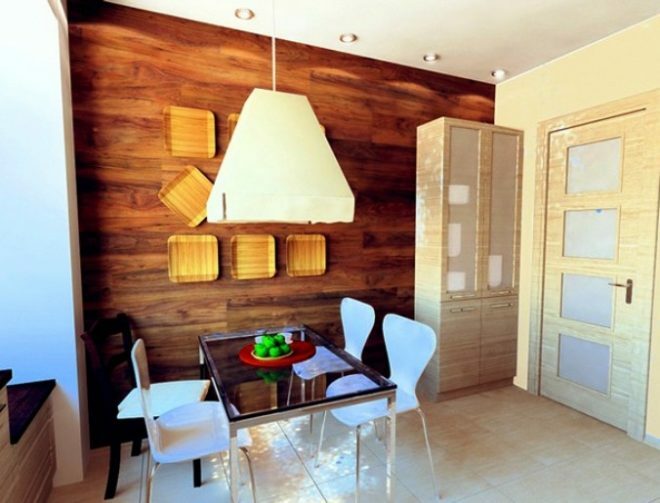
Parquet board. The material is produced with a water-repellent impregnation, tinted during the manufacturing process. For wall cladding, a timber frame is erected, which holds the boards on itself. As the main material for decoration, it is rarely used due to the high cost, but as a decorative design of individual walls it looks beautiful and original.
Decorative rock
A material that can change the interior of a room beyond recognition. Wall decoration with natural stone combines modern design and absolute reliability. Moisture resistance, unusual design, variety of shades allowed it to win deserved popularity.
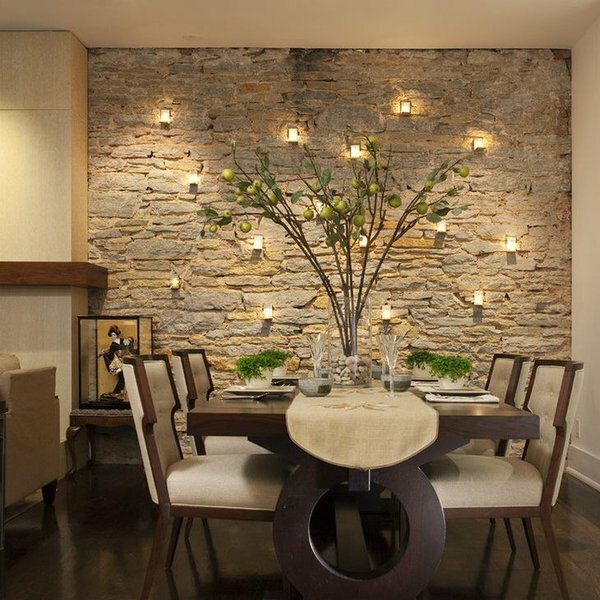
The stone is not afraid of water, oil splashes and other kitchen contamination, so it is often placed in the work area.
Types of stone for decoration:
- slate;
- travertine;
- river pebbles;
- limestone;
- tuff;
- sandstone.
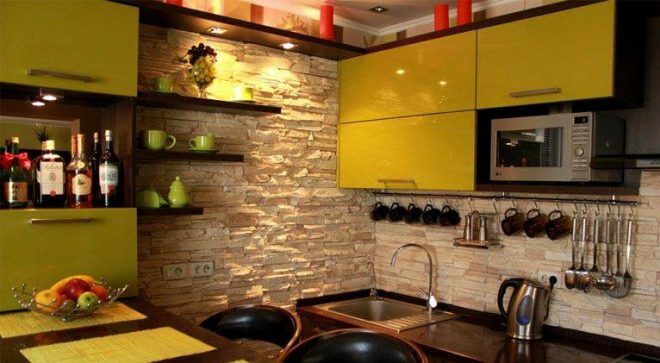
Stone decoration is not just a direction in decor, it sets the tone for the entire interior design.
Finishing options:
- facing the entire surface;
- decoration of one wall;
- apron trim;
- blotches on painted walls;
- stone tiles in the interior style.
Decorative stone visually expands the space, adds volume and light to it due to the reflective properties of the varnish coating. It creates a picturesque contrast to kitchen furniture and other furnishings. Decorating uneven corners with a stone perfectly hides all flaws.
MDF panels
Having the advantages of natural wood, MDF panels have a more affordable price. The material is environmentally friendly, epoxy resin, phenol and other harmful substances that are released during operation are not used for its manufacture.
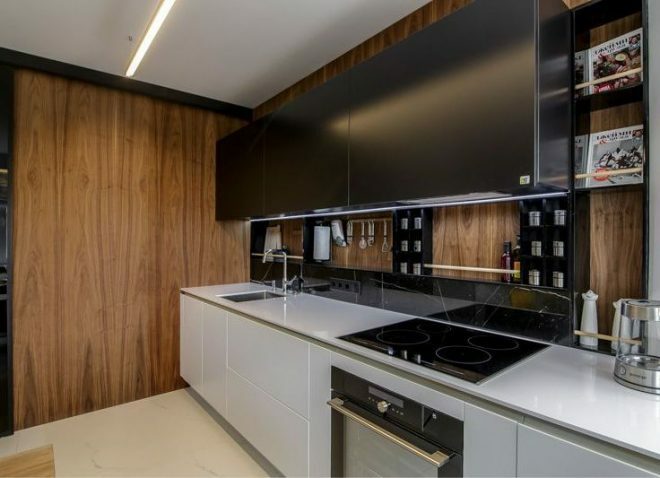
- Sheets of compressed wood conduct sound poorly, due to which they have excellent sound insulation and are very popular in the decoration of multi-storey residential premises.
- Moisture resistance and heat resistance allows the use of MDF panels in rooms with high temperature and humidity.
- Externally, the panels imitate wood, but with the help of color lamination, you can apply any pattern to them or make an order for a material that matches the color of the kitchen furniture. When choosing panels, the color of the ceiling and floor must be taken into account.
Flexible stone
Natural stone - strong and durable material, but it is heavy and dense. These disadvantages are absent in a modern unique product - flexible stone. It represents decorative tiles up to 4 mm thick, with a layer of sandstone applied to them. Acrylic binders, which are contained in the layer of sand, allow them to take any desired shape.
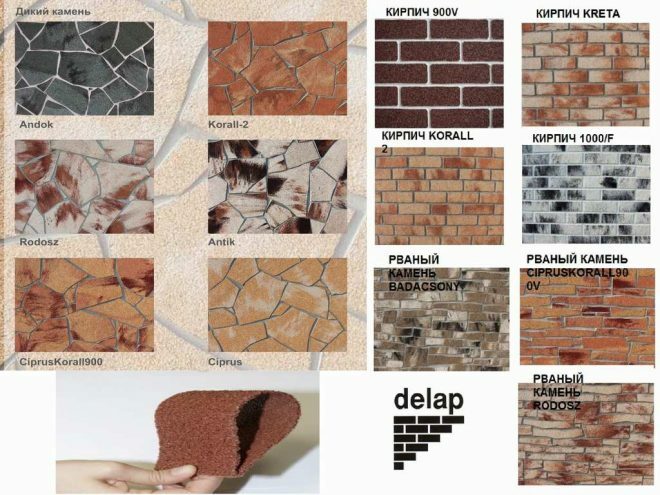
It is used for finishing rooms with high humidity. Due to the fact that it does not emit toxic substances and is not flammable, it is used where there are increased requirements for fire safety. The high vapor permeability of the stone allows you to maintain a comfortable microclimate in the kitchen.
When finishing curved surfaces, flexible flexible stone will work better than other materials. Decorative stone inserts, combined with other materials, are used for room zoning. When dividing large surfaces, the combination of stone and marble tiles looks original.
Painted panels and frescoes are applied to the stone base. The combination of irregularly shaped lamps and stone that diffuses light creates an original visual effect in the room. The combination of different materials and shades will appeal to lovers of contrast in interior design.
Correctly selected wall decoration in the kitchen will make the cooking process more enjoyable, and the kitchen design will be bright and memorable.
Photo: options for wall decoration in the kitchen

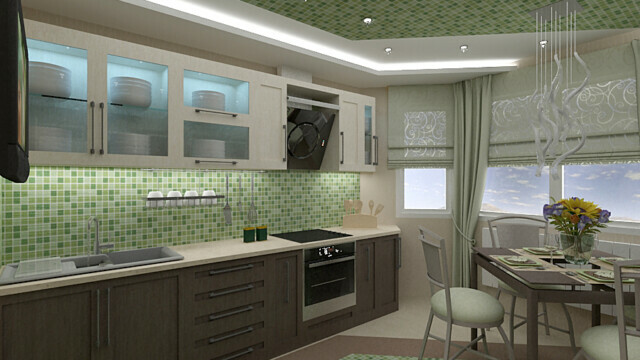
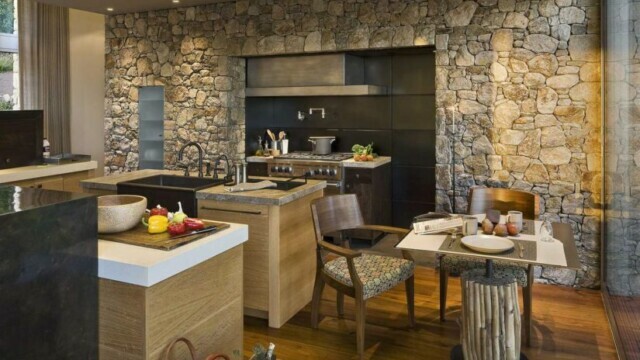

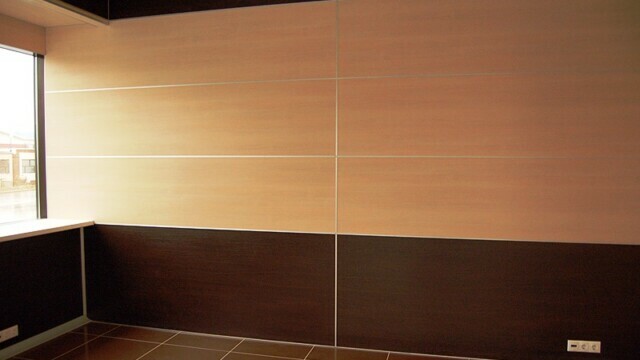
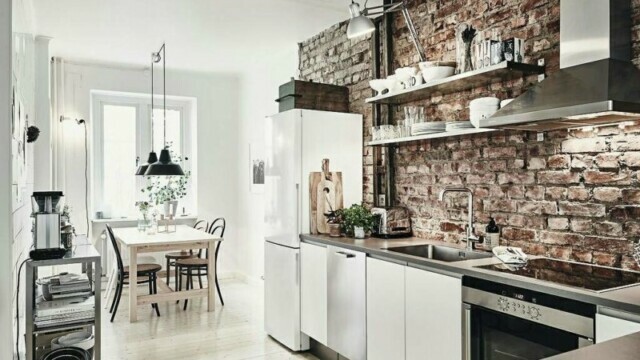
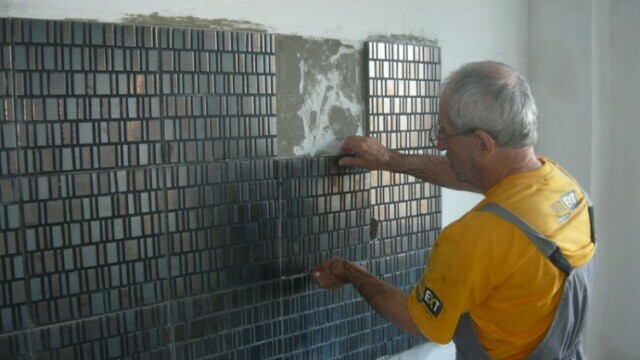

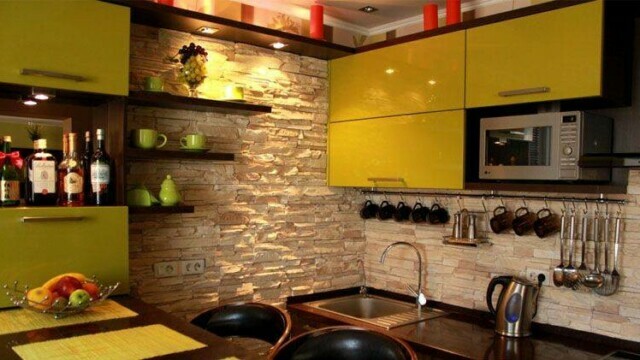
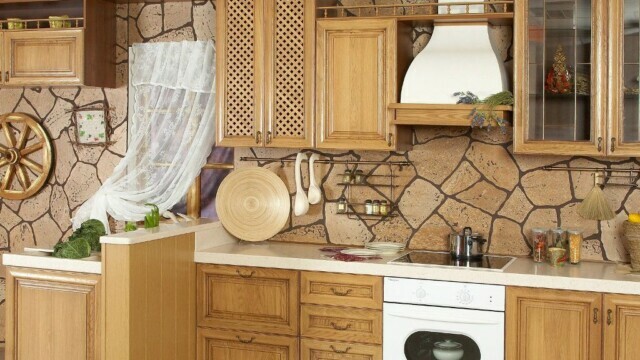
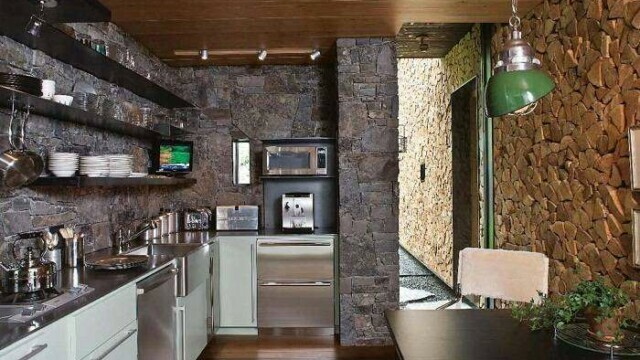
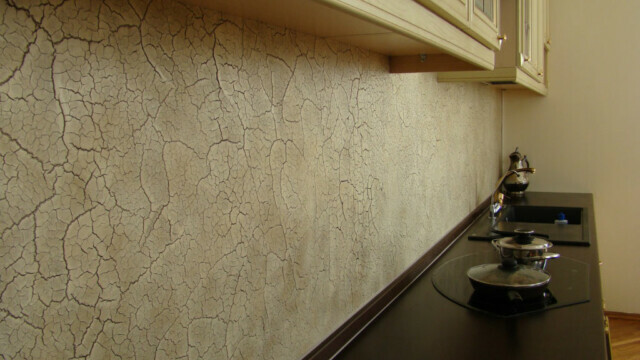
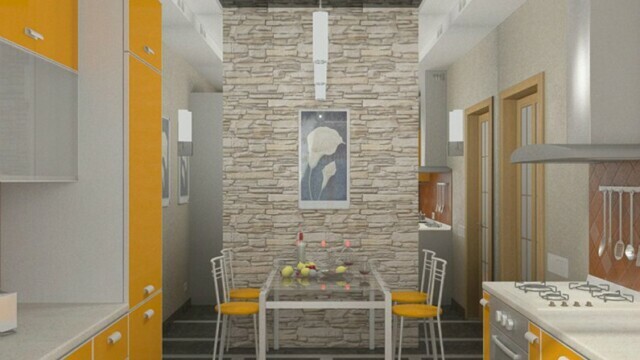

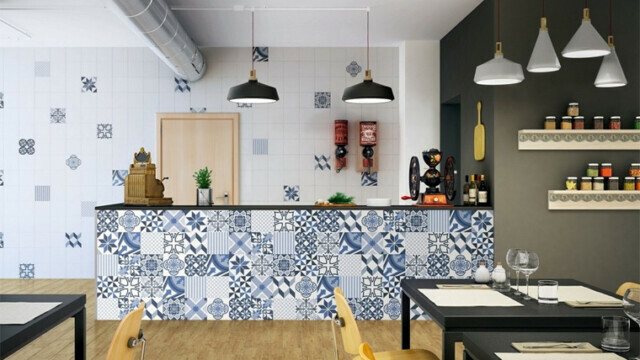
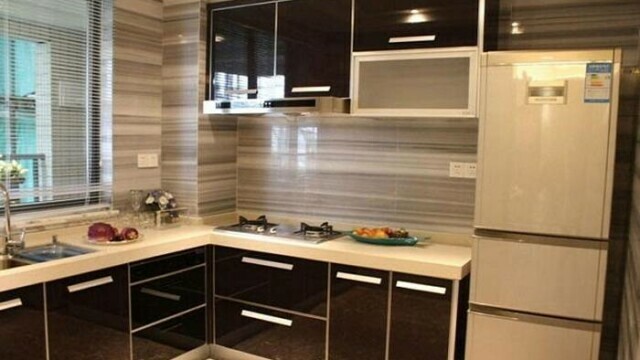
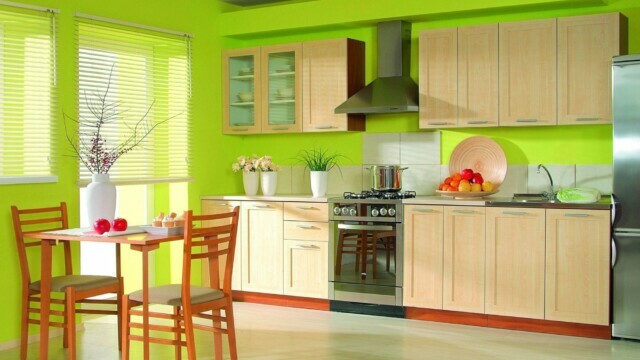
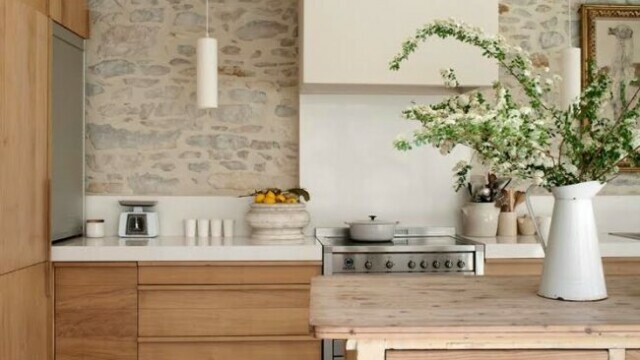
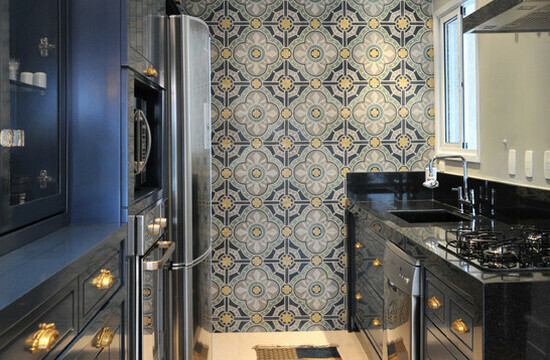
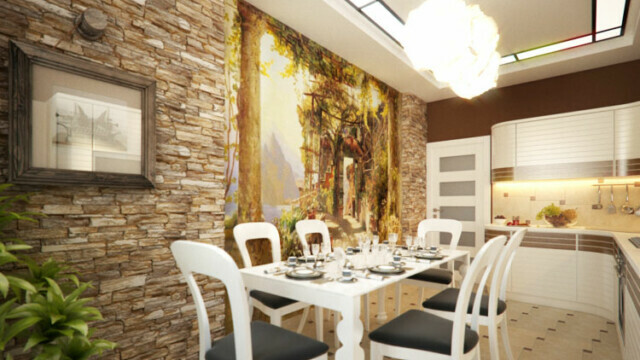
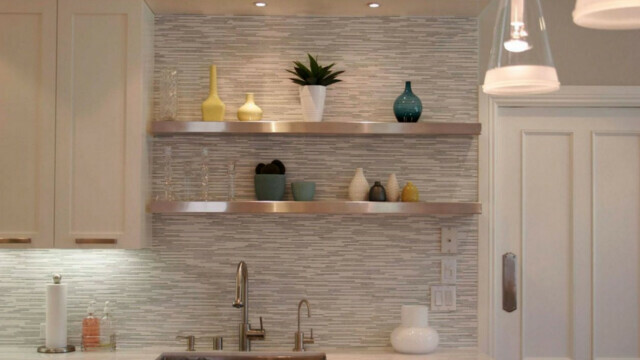


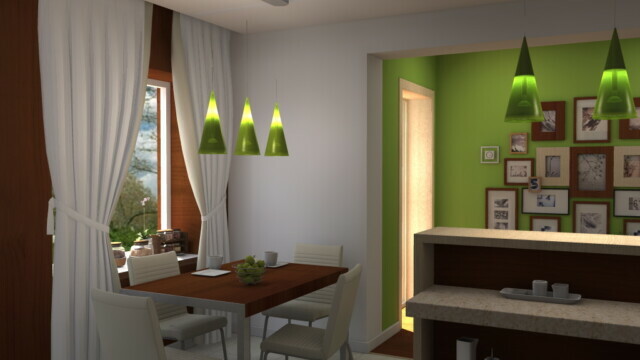
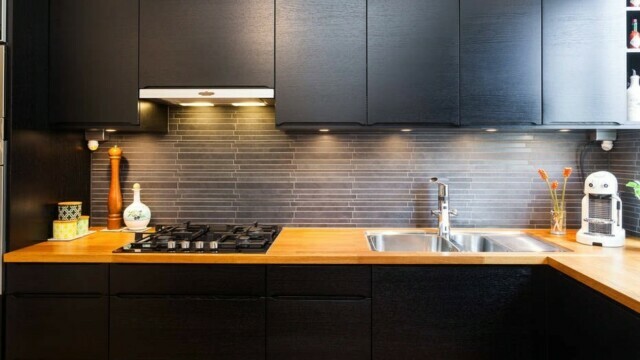
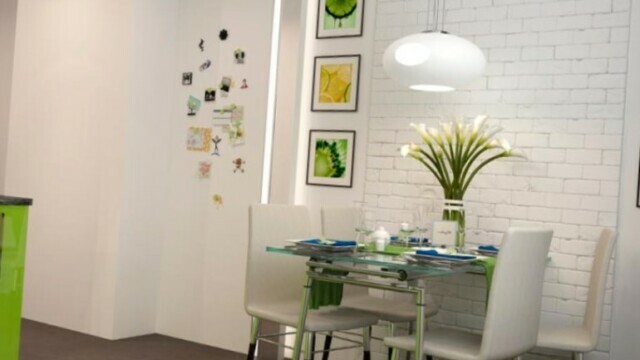



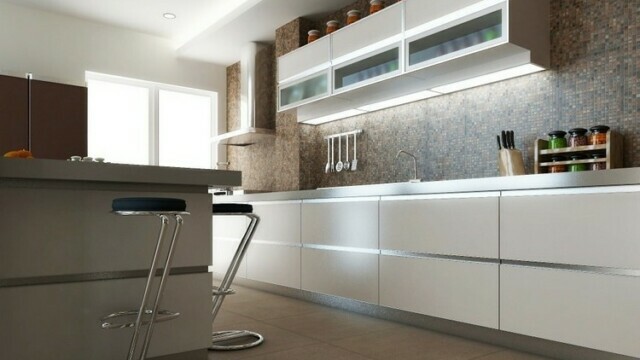
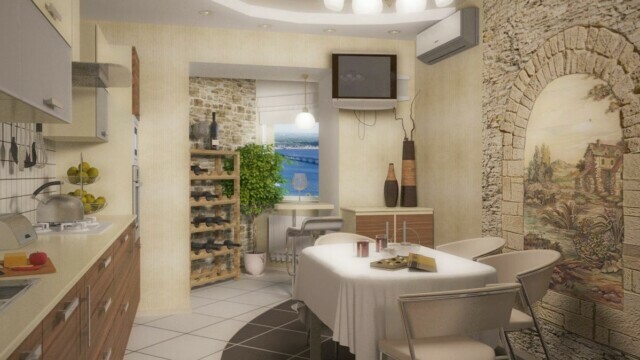
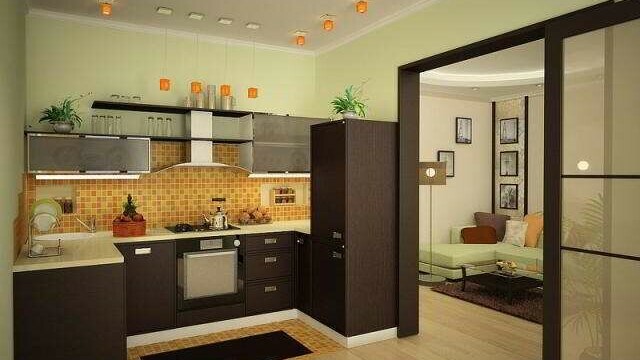
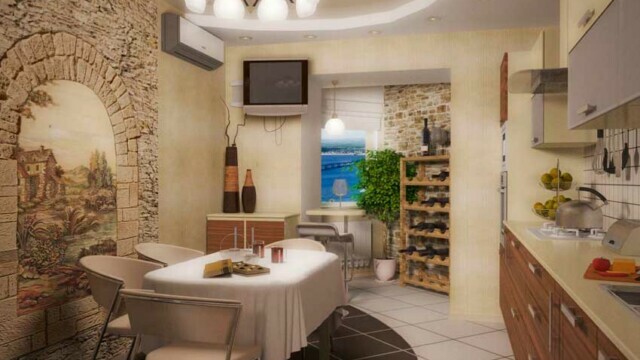
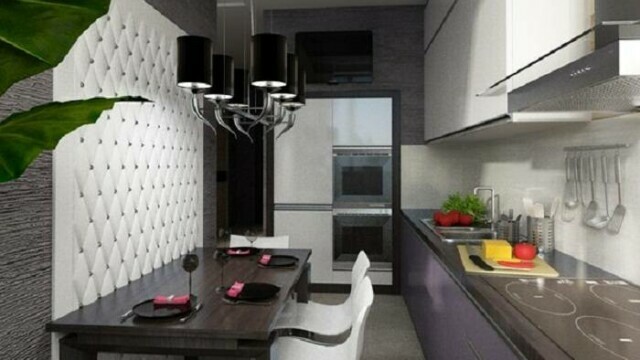
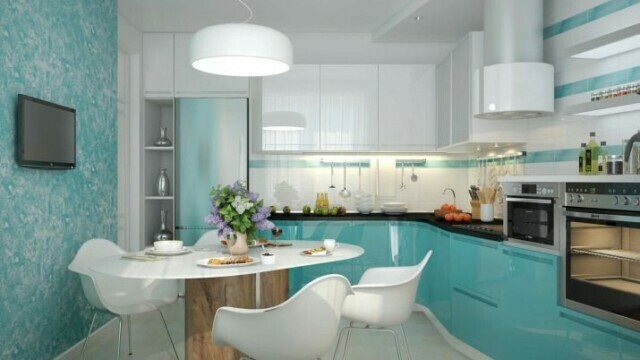
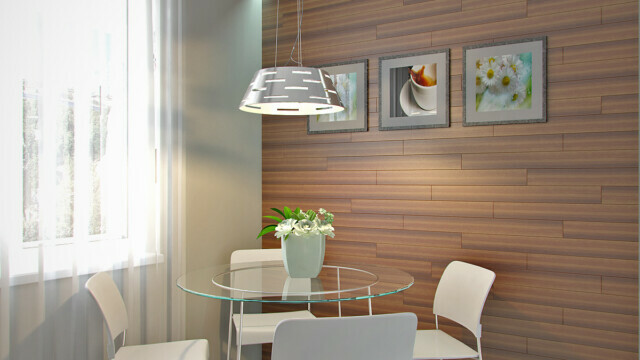
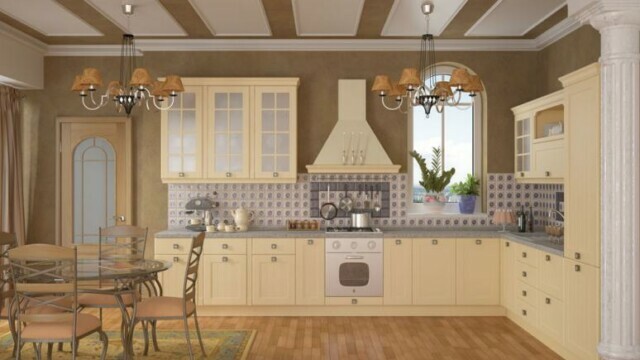
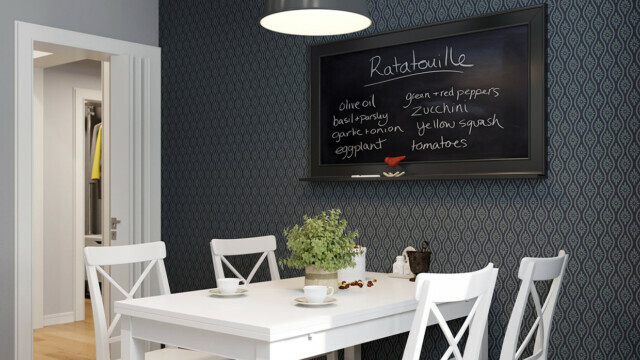
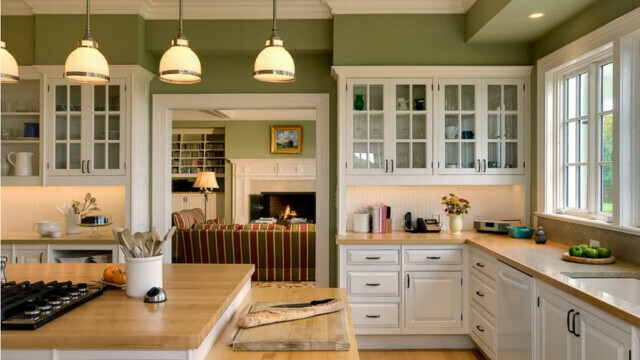


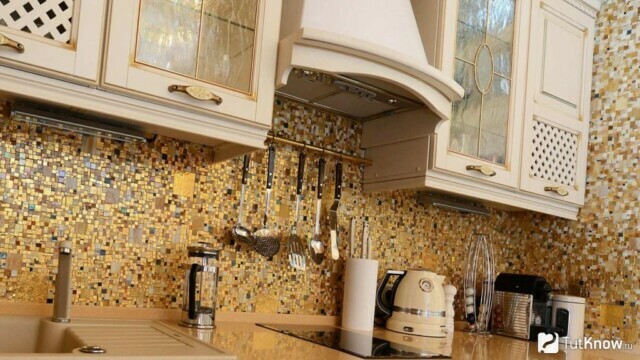
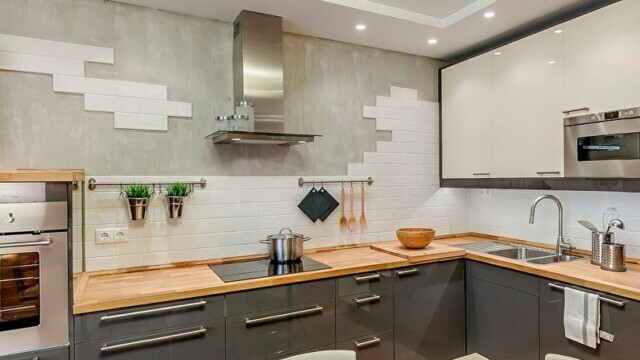
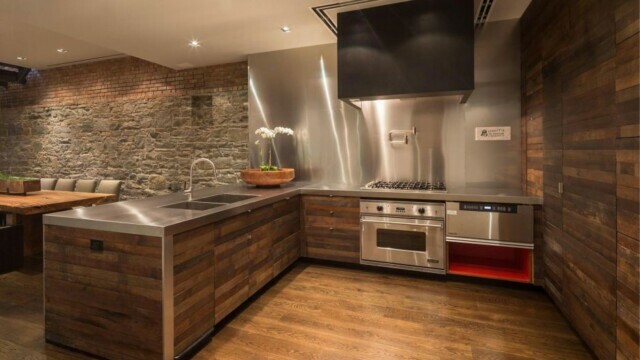

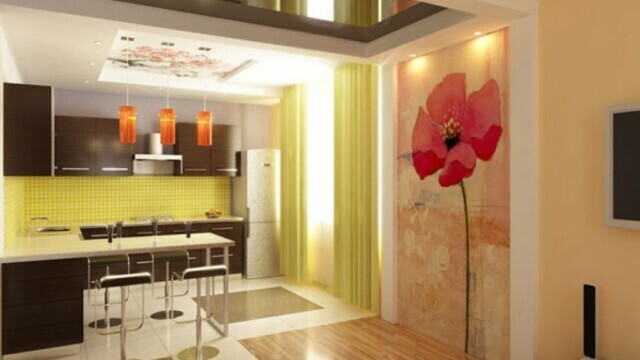
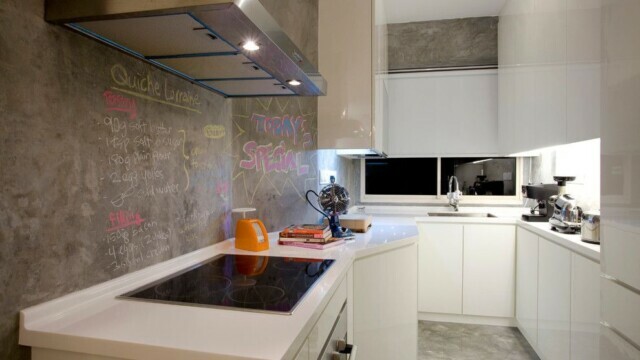
Prev
Next
Video: how best to decorate and decorate a kitchen wall during renovation
average rating 0 / 5. Number of ratings: 0
No ratings yet. Be the first to rate.


